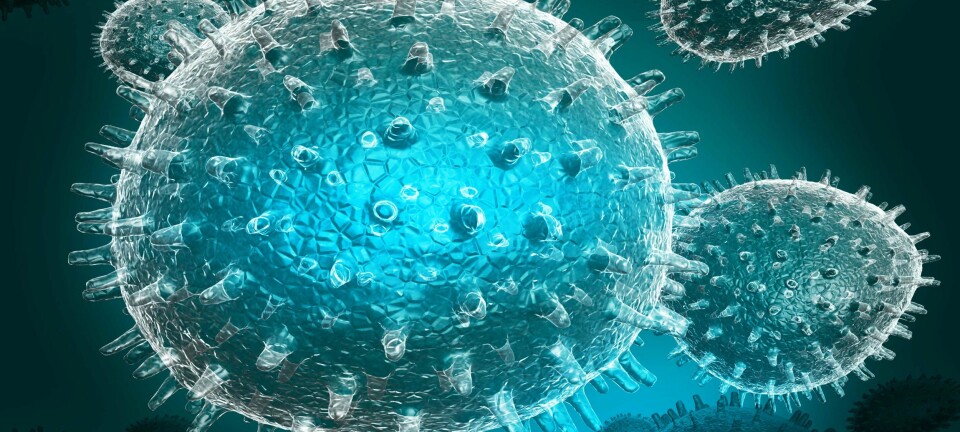
Unveiling mutations behind cervical cancer
Charting the genomic alterations that cause cervical carcinomas provides hope for new ways of treating the disease.
Denne artikkelen er over ti år gammel og kan inneholde utdatert informasjon.
The genomic underpinnings of cervical cancer have been recently mapped by scientists in Norway, Mexico, the USA and China. Their cooperation has advanced understanding of how the disease occurs.
Their research is based on 115 patients – 100 Norwegian and 15 Mexican.
Scientists at Haukeland University Hospital and the University of Bergen have played a key role in the study, which has been published online in Nature.
The researchers used genetic mapping to find previously undiscovered mutations, although some of these variations have been seen in other types of cancer. This can potentially be of use in developing new treatments for cervical cancer.
Changes in cancer cells
The researchers compared genomic data derived from cervical cancer tumours with genomic data from healthy tissue from the same individual to determine what may have gone wrong – or mutated – in the genome that allowed the cancer to develop. The mutations that were found in tumours but not in healthy tissue from the same individuals are referred to as somatic mutations.
Then they looked at the other patients to see if they could find comparable changes.
The study detected eight new mutations that had not previously been linked to this form of cancer. One of the new mutations has been seen in connection with breast cancer, and methods for treating it are known.
This boosts hopes that some patients with this type of cervical cancer can benefit from the discovery.
Many are afflicted
Cervical cancer is globally the third most prevalent cancer type among women and the most common among women under the age of 30.
Incidences of cervical cancer in Norway have dropped 40 percent since the 1950s, largely because of effective screening. Women are urged to get a pap smear once every three years.
The Cancer Register of Norway reports that three out of four who contract the disease survive it. Among Norway’s population of 5 million, 300 new cases of cervical cancer were detected in 2011.
Screening programmes for cervical cancer are unavailable in many developing countries where its mortality rate is much higher than in industrialised countries. Worldwide, the cancer is responsible for about 10 percent of cancer deaths among women.
International cooperation
Professor of Clinical Medicine Helga B. Salvesen of Haukeland University Hospital and the University of Bergen is one of the two researchers who led the study.
She says such international collaboration is vital in genetic mapping of such cancers.
“By analysing genomic data from diverse populations, we can discover patterns to disease progression in context of the full range of human genetic variation,” said co-senior author Helga Salvesen in a press release from the Broad Institute.
Broad Institute is linked to Harvard and MIT in Boston, USA. Salvesen was a visiting scientist at Broad when the study was conducted.
Concurrence
Researchers are still unsure whether cervical carcinomas act in the same way in populations around the world.
But the new study shows a high degree of concurrence in two diverse patient populations, in Norway and Mexico.
Low and middle income countries suffer the largest burden of cancer in the world, points out Jorge Mendelez of the National Institute of Genomic Medicine in Mexico City.
“Nevertheless,” he says, “only 5 percent of all the global resources dedicated to this group of diseases are allocated to them.”
In short, international research cooperation is fully necessary for fighting cancer in developing countries.
HPV infection
The study sheds new light on human papillomavirus (HPV), which lies at the root of cervical cancer.
HPV causes an infection that the immune system usually handles. In some cases the virus lingers and integrates itself into the human genome. The new study shows the connection between HPV-affected parts of the cells’ genes and the development of the disease.
“Our findings further elucidate the key role HPV is playing in the development of cervical cancer, which in turn emphasizes the importance of combating the disease by vaccinating against HPV,” Matthew Meyerson said in the press release from the Broad Institute.
Professor Meyerson was the other senior co-author of the study. He works with the Broad Institute and the Dana-Farber Cancer Institute, which is also in Boston.
Norwegian 12-year-old girls have been offered free HPV vaccines since 2009 as part of the country’s vaccination programme.
-----------------
Read the Norwegian version of this article at forskning.no
Translated by: Glenn Ostling

































